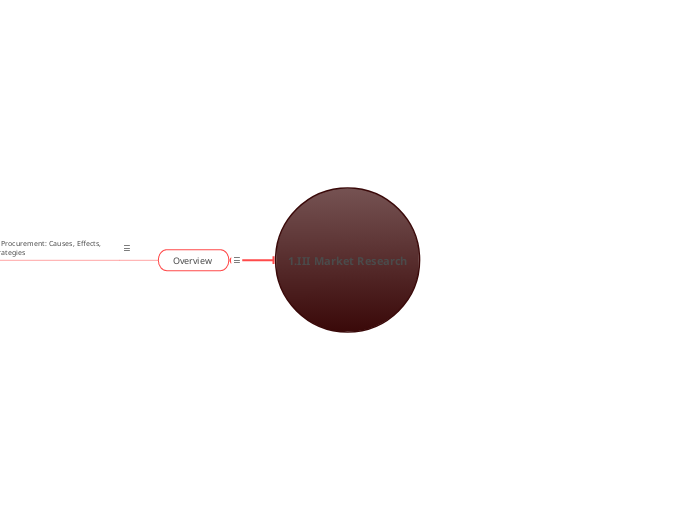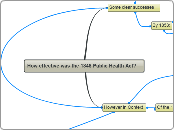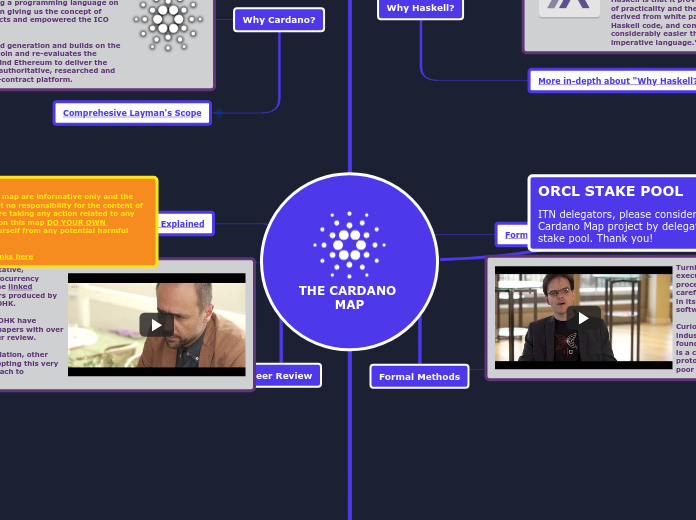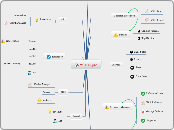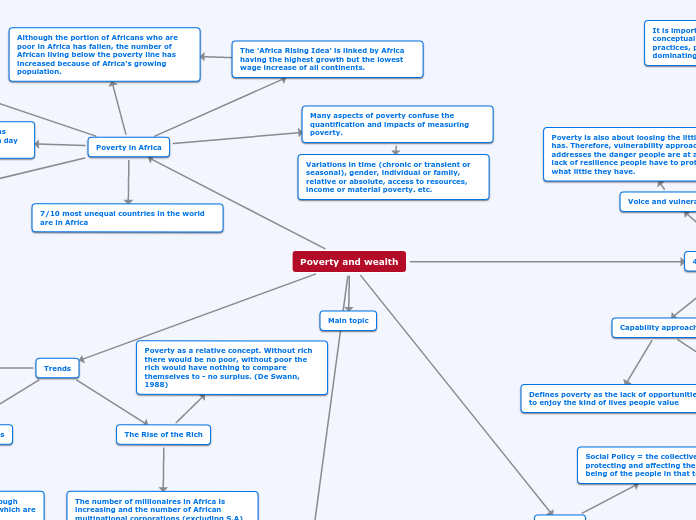1.III Market Research
Overview
The US government procurement tech industry is experiencing significant growth, driven by governmental regulations and customer demand for sustainable procurement practices. A larger supplier ecosystem is being recognized as a critical element, and federal contractors can anticipate a trend of spending growth in FY 2023, indicating promising opportunities in the industry.
Moreover, the industry is witnessing a growing trend of adopting artificial intelligence (AI) in contract management and vendor compliance verification. AI technology is being used to automate the contract life cycle, assisting contracting officers in tasks such as report generation, cost analysis, cost realism, labor rate grading, and vendor compliance verification. This adoption of AI is expected to increase work efficacy and reduce the time needed to complete evaluations, streamlining the procurement process, and enabling procurement professionals to focus on more strategic tasks.
According to various sources, the US government procurement tech industry, particularly in contract management and vendor compliance verification, is experiencing growth and has an optimistic outlook. In addition, the industry is continuously evolving, and new trends are emerging, such as the use of blockchain technology in procurement, which can help to increase transparency, enhance security, and reduce costs.
AI in Government Procurement: Causes, Effects, and Mitigation Strategies
The use of artificial intelligence (AI) in government procurement has been steadily rising as agencies seek to leverage the benefits of automation, analytics, and enhanced decision-making. AI is being utilized across the procurement lifecycle, including planning and requirements, supply base optimization, solicitation and sourcing, contract management, and reporting and analytics.
Several factors are catalyzing the adoption of AI in public-sector procurement, including the need for improved efficiency and cost savings, demand for advanced data analytics and risk mitigation, availability of AI-as-a-service solutions through cloud computing, maturing AI technologies like machine learning and natural language processing, and executive mandates for digital transformation of government operations.
The global AI in procurement market size is estimated to reach USD 5.24 billion by 2028, expanding at a CAGR of 8.5%. North America accounted for the largest share of the global market in 2021 at 60.4%. The US federal government spent an estimated $3.3 billion on AI technologies and services in FY2022, a 6.5% increase from FY2021. This is expected to continue to grow, as AI adoption becomes more widespread.
To mitigate challenges and ensure the successful implementation of AI in government procurement, several strategies can be employed. These include:
itigation Strategies
To mitigate challenges and ensure the successful implementation of AI in government procurement, several strategies can be employed, including:
I in Government Procurement: Causes, Effects, and Mitigation Strategies
The use of artificial intelligence (AI) in government procurement has been steadily rising as agencies seek to leverage the benefits of automation, analytics, and enhanced decision-making.
This report analyzes the current market landscape and outlook for AI adoption in federal, state, and local government procurement.
Several factors are catalyzing the adoption of AI in public-sector procurement:
Need for improved efficiency and cost savings.
Demand for advanced data analytics and risk mitigation
Availability of AI-as-a-Service solutions through cloud computing
Maturing AI technologies like machine learning and natural language processing
Executive mandates for digital transformation of government operations
The global AI in procurement market size is estimated to reach USD 5.24 billion by 2028, expanding at a CAGR of 8.5% (Grand View Research). North America accounted for the largest share of the global market in 2021 at 60.4%. The US federal government spent an estimated $3.3 billion on AI technologies and services in FY2022, a 6.5% increase from FY2021 (Stanford HAI).
AI is being utilized across the procurement lifecycle, including planning & requirements, supply base optimization, solicitation & sourcing, contract management, and reporting & analytics. Major AI solution vendors include Microsoft, AWS, and Google Cloud, providing AI/ML-enabled procurement software suites, while startups like Deep Spend, Sieve, and Simoni offer targeted AI tools for public sector buyers. Services firms like Deloitte, EY, and Accenture provide AI consulting and implementation.
The integration of AI in government procurement can help mitigate bias and corruption by introducing transparency and accountability. AI algorithms can detect anomalies, identify potential conflicts of interest, and flag suspicious activities, thus ensuring fairness and integrity in the procurement process.
However, certain challenges and gaps need to be addressed to fully leverage the potential of AI in government procurement. These include a lack of AI expertise within the government procurement workforce, difficulty integrating AI with legacy ERP systems, concerns around data transparency, accountability, and ethics, cybersecurity vulnerabilities around digital procurement platforms, and cultural resistance to emerging technologies like AI from stakeholders.
It is crucial to establish robust guidelines and regulations to mitigate potential risks associated with AI in government procurement. This includes implementing transparency and accountability measures to address algorithmic bias and discrimination issues. Additionally, fostering diversity and inclusion in AI procurement can help ensure that AI technologies cater to the needs of all citizens and do not perpetuate existing inequalities.
AI systems have been rapidly gaining importance in government procurement, bringing about significant changes in the acquisition process and offering numerous benefits, such as time and cost savings. However, recent research has revealed a gap in public procurement guidelines for AI systems, which underscores the need for comprehensive guidelines to govern the procurement process and ensure that the benefits of AI can be fully harnessed. Governments worldwide are exploring the immense potential impact of AI and looking for ways to unlock its full value. Although AI has the potential to be transformative in government procurement, there are still barriers to innovation, particularly in the federal government.
Furthermore, it is important to note that AI in procurement market is projected to grow at a CAGR of 8.5% from 2021 to 2028, reaching USD 5.24 billion by 2028. North America currently accounts for the largest share of the global market at 60.4%, highlighting its significant role in the market. Additionally, the US federal government has increased its spending on AI technologies and services to an estimated $3.3 billion in FY2022, which is a 6.5% increase from FY2021.
In conclusion, the adoption of AI in public-sector procurement is on the rise, and its benefits are becoming increasingly evident. Governments worldwide are exploring the immense potential impact of AI and seeking ways to unlock its full value. By addressing the challenges and implementing effective mitigation strategies, governments can fully leverage the benefits of AI in the procurement process and ensure that AI is a key driver for innovation and growth in the coming years.
Developing clear guidelines and standards for the use of AI in government procurement. This can help to ensure that AI is used ethically, fairly, and transparently and that it does not result in unintended consequences or negative impacts on society.
esearch Findings and Statistics
The global AI in procurement market is projected to grow at a CAGR of 8.5% from 2021 to 2028, reaching USD 5.24 billion by 2028. North America accounted for the largest share of the global market in 2021 at 60.4%. The US federal government spent an estimated $3.3 billion on AI technologies and services in FY2022, a 6.5% increase from FY2021.
Encouraging collaboration between government departments, industry experts, and academia to facilitate the exchange of knowledge and best practices in AI procurement.
Investing in training and development programs to enhance the digital skills of government personnel involved.
eferences
Appian. (n.d.). How AI in Procurement Can Improve Government Acquisitions. Appian. Retrieved from [https://appian.com/blog/acp/public-sector/ai-in-procurement.html](https://appian.com/blog/acp/public-sector/ai-in-procurement.html)
McKinsey & Company. (2019, February). The potential value of AI—and how governments could look to capture it. McKinsey & Company. Retrieved from [https://www.mckinsey.com/industries/public-sector/our-insights/the-potential-value-of-ai-and-how-governments-could-look-to-capture-it](https://www.mckinsey.com/industries/public-sector/our-insights/the-potential-value-of-ai-and-how-governments-could-look-to-capture-it)
Springer. (2022). Public procurement of artificial intelligence systems: new risks and future proofing. Springer. Retrieved from [https://link.springer.com/article/10.1007/s00146-022-01572-2](https://link.springer.com/article/10.1007/s00146-022-01572-2)
Federal News Network. (n.d.). Public procurement of Artificial Intelligence intensifies. Procurement Magazine. Retrieved from [https://procurementmag.com/articles/public-procurement-of-artificial-intelligence-intensifies](https://procurementmag.com/articles/public-procurement-of-artificial-intelligence-intensifies)
Stanford HAI. (n.d.). AI Spending in the US Federal Government. Retrieved from [https://hai.stanford.edu/news/ai-spending-us-federal-government](https://hai.stanford.edu/news/ai-spending-us-federal-government)
[MarketAnalysis20230905-GovSide[1].pdf](1%20III%20Market%20Research%2004810e6280d14862a08b50504112a1a2/MarketAnalysis20230905-GovSide1.pdf)
Monitoring the use of AI in government procurement and evaluating its impact regularly. This can help to identify areas for improvement and ensure that AI is being used effectively and efficiently to achieve procurement objectives.
onclusion Recent research findings and statistics indicate a significant reliance on externally sourced AI solutions. The application of AI in government procurement is gaining significant momentum, driven by the need for enhanced efficiency, insights, and decision support. With a burgeoning technology marketplace and increasing adoption across federal, state, and local agencies, the use of AI in public procurement is poised for robust growth over the next decade.
This growth can be attributed to the various benefits that AI-based procurement offers. AI can automate repetitive and manual procurement processes, allowing procurement professionals to focus on more strategic work. It can also help identify potential risks and opportunities and recommend the best course of action. Additionally, AI can increase transparency and accountability in the procurement process, helping to combat corruption and ensure a fair bidding process.
Governments can fully leverage the benefits of AI in the procurement process by implementing effective mitigation strategies and establishing robust guidelines and regulations. They can also train their procurement professionals on how to effectively use AI tools to optimize procurement processes and ensure that the technology is implemented in a way that aligns with their procurement goals.
As the adoption of AI in public procurement intensifies, there is a need for more research and development to ensure that the technology is future-proofed and risks are mitigated. Governments should also continue to monitor the impact of AI on procurement and be prepared to make changes as necessary.
verview
The US government procurement tech industry is experiencing significant growth and is expected to continue expanding in the coming years. Organizations are embracing sustainable procurement practices driven by governmental regulations and customer demand. There is an increased focus on local sourcing and supplier diversity, and a more significant supplier ecosystem is being recognized as a critical element. Federal contractors can anticipate a trend of spending growth in FY 2023, indicating promising opportunities in the industry.
One of the emerging trends in the industry is the adoption of artificial intelligence (AI) in contract management and vendor compliance verification. AI technology is being utilized to automate the contract life cycle, assisting contracting officers in tasks such as report generation, cost analysis, cost realism, labor rate grading, and vendor compliance verification. This adoption of AI is expected to increase work efficacy and reduce the time needed to complete evaluations, which will streamline the procurement process.
The US government procurement tech industry has several major players, including Microsoft, which offers a cloud-based AI software-as-a-service (SaaS) product. Other companies in the sector include Startups Insights, which provides insights on procurement technology trends; BGOV, which offers information on federal contract spending trends; Federal News Network, which includes commentary on public procurement trends and outlook; and Bank of America, which publishes industry reports on trends in government contracting.
According to various sources, the US government procurement tech industry, particularly in contract management and vendor compliance verification, is experiencing growth and an optimistic outlook. The Eltek 14th Annual Clarity Government Contracting Industry Study reveals that 49% of respondents reported increasing government sales revenue in 2022, while more than half expected further growth. Additionally, the global Government Procurement Tool market was valued at USD 500.0 million in 2021 and is projected to expand at a compound annual growth rate (CAGR) of 7.99%.
Encouraging collaboration between government departments, industry experts, and academia to facilitate the exchange of knowledge and best practices in AI procurement. This can lead to better decision-making and more effective use of AI in procurement processes.
Investing in training and development programs to enhance the digital skills of government personnel involved. This can help to ensure that procurement professionals have the necessary skills and knowledge to work with AI effectively and efficiently.
ecent Case Studies
AI systems are playing an increasingly significant role in government procurement, revolutionizing the acquisition process, and offering numerous benefits in terms of time and cost savings. Recent research and practice have highlighted the existing gap in public procurement guidelines for AI systems, emphasizing the need for comprehensive guidelines to govern the procurement process. Governments worldwide are exploring the immense potential impact of AI and seeking ways to unlock its full value. Although AI has the potential to be transformative in government procurement, barriers to innovation exist, particularly in the federal government.
arket Research on AI in Government Procurement
